Vassily Kandinsky was a 20th century painter who was one of the first to develop pure abstract art. His paintings are characterised by bold, unrestrained colours and energetic brushstrokes. Kandinsky believed that colour could be used to express emotions and convey spiritual messages. He once said: "Colour is the keyboard, the eyes are the hammers, the soul is the piano with many strings. The artist is the hand that plays, touching one key or another, to cause vibrations in the soul." Kandinsky's pioneering use of colour and abstraction helped shape the course of modern art. His paintings are still renowned for their dynamism and power. Discover seven of his most beautiful abstract paintings below.
Yellow-red-blue
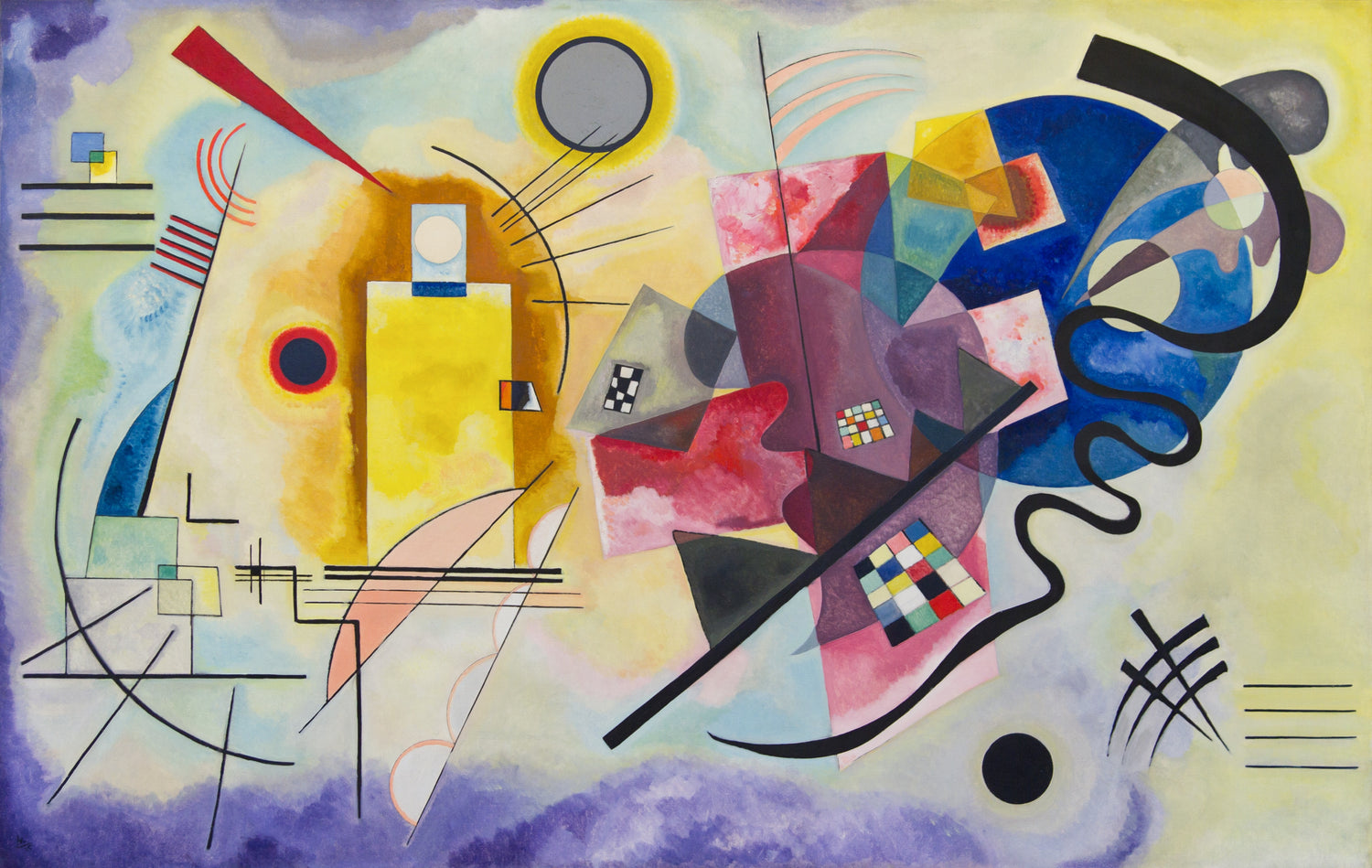
Suprematism was a Russian art movement that focused on the representation of basic geometric shapes in a limited range of colours. Yellow-Red-Blue, painted by Kandinsky during his time at the Bauhaus, can be seen as a symphony he created by merging his style with Bauhaus techniques and Suprematist ideas. The Bauhaus was a modernist art school in Germany that had a major influence on 20th century art, and where Kandinsky taught from 1922 to 1933.
The work can be divided into two parts, with geometric shapes and bright colours on the left and abstract shapes and dark colours on the right. As the title of the abstract painting suggests, Kandinsky mainly used the three primary colours, yellow, red and blue.
The amalgam of blue, red, black, yellow and violet seen throughout the painting again justifies the painter's vision of music in colour, each shade bringing a different emotion.
Date of the work : 1925
Original dimensions : 128 × 201,5 cm
Place of conservation : Centre Georges Pompidou, Paris, France
Circles within a circle
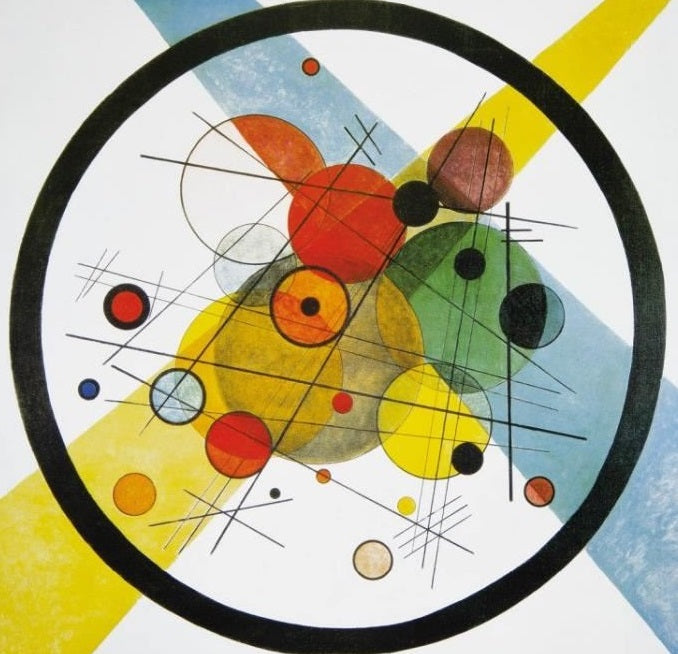
Although this abstract painting is very different from Kandinsky's other works from the early years of the 20th century, Circles within a Circle reflects his unshakeable belief that certain shapes and colours represent emotions that can be coded and assembled into a whole, which reflects the unity of the universe.
Twenty-six intersecting circles of different sizes and shades are surrounded by the black circle and several of them are connected by straight black lines. Two beams of yellow and blue light emanating from the upper corners intersect towards the centre and change the colours of the circles when they meet.
The artist says: "A circle is a combination of the most extreme opposites. Combining the eccentric and the concentric into one form and balancing it with another. The black outer circle, as if it were the second image, makes us focus on the interaction between the inner circles as well as on two diagonal bands that cross each other to increase the effect of perspective in the composition.
Date of the work : 1923
Original dimensions : 98.7 cm × 95.6 cm
Place of conservation : Philadelphia Museum of Art
On White II

A landmark of 20th century modern art, this work shows various geometric shapes with a striking combination of colours. Kandinsky used white to symbolise peace, silence and life. The black used in his work suggests the absence of possibilities. This painting is thought to symbolise the possibilities that life offers, with black representing death and how these possibilities can be lost. White also symbolises peace, while black is used to symbolise the absence of everything. Kandinsky frequently used geometric patterns in his works of the 1920s and early 1930s. On White II is one of his best known abstract geometric paintings.
Date of the work : 1923
Original dimensions : 105 cm x 98 cm
Place of conservation : Centre Georges Pompidou, Paris, France
Color Study, Squares with Concentric Circles
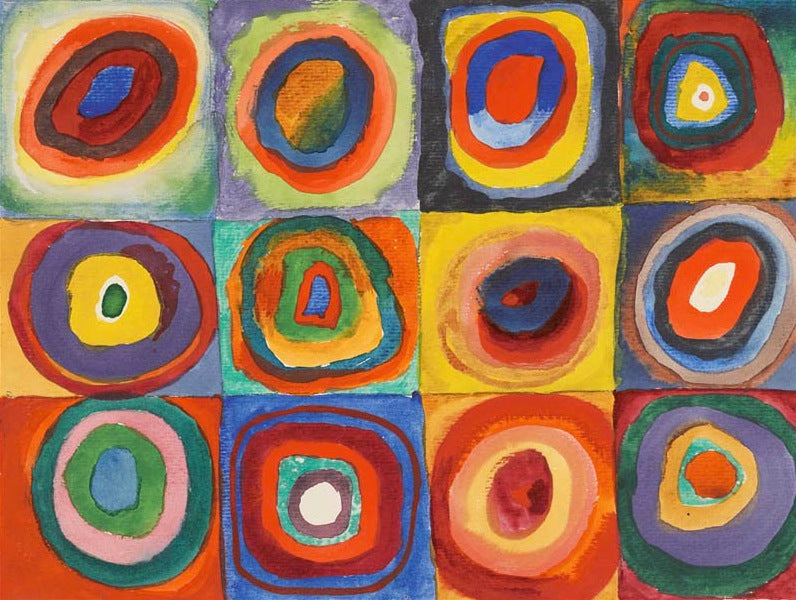
This abstract work is an almost scientific research where thoughts, imagination and chromatic effects meet in a watercolour. Color Study, Squares with Concentric Circles is considered one of Kandinsky's best-known paintings.
According to the artist, colour was the deepest soul of the picture and not just its attribute as most people think. Hence the desire to study the emotional content of chromatic expression, through the implementation of numerous experiments: in this case, Kandinsky's aim was to test different combinations of colours to assess their different perception on the observer.
Date of the work : 1913
Original dimensions : 23.9 cm X 31.6 cm
Place of conservation : Lenbachhaus, Munich, Germany
Composition IV
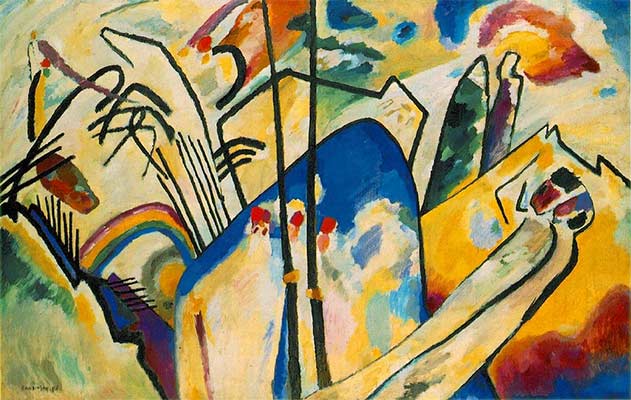
Composition IV was completed in 1911 and is one of a series of ten paintings. Kandinsky used bright, contrasting colours to create an aesthetic, metaphysical and psychological impression on the viewer. In the upper left-hand corner of the picture, two invaders brandish cutlasses. To the right, five invaders armed with spears and one armed with a sword stand on a blue hill topped by a building.
A rainbow in the centre-left of the image represents a footbridge. Black lines underline the yellows and shades of red. Kazimir Malevich's art was about common ideas. Sharp lines of different thicknesses are juxtaposed with the softer colours used in the painting, and two vertical lines seem to divide the arrangement.
Date of the work : 1911
Original dimensions : 159cm x 250 cm
Place of conservation : Kunstsammlung Nordrhein-Westfalen, Düsseldorf
Composition VII
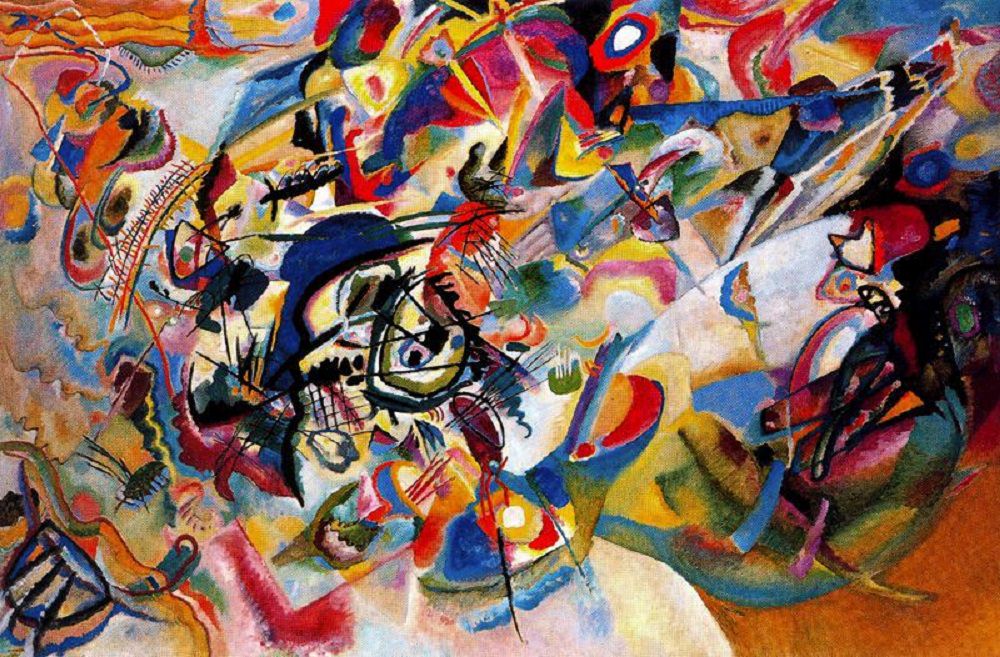
Composition VII is the culmination of Kandinsky's
Kandinsky created over 30 sketches over several months before painting it, which he did in four days. The painting is thought to allude to the apocalyptic themes of the Flood, the Last Judgement, the Resurrection and Paradise. Kandinsky considers it his most complex abstract work. A swirling hurricane of colour and form, Composition VII is considered by abstract art enthusiasts to be the most important painting of its kind and Vassily Kandinsky's most famous painting.
Date of the work : 1913
Original dimensions : 190 cm x 275 cm
Place of conservation : Galerie Tretyakov, Moscou
Composition VIII
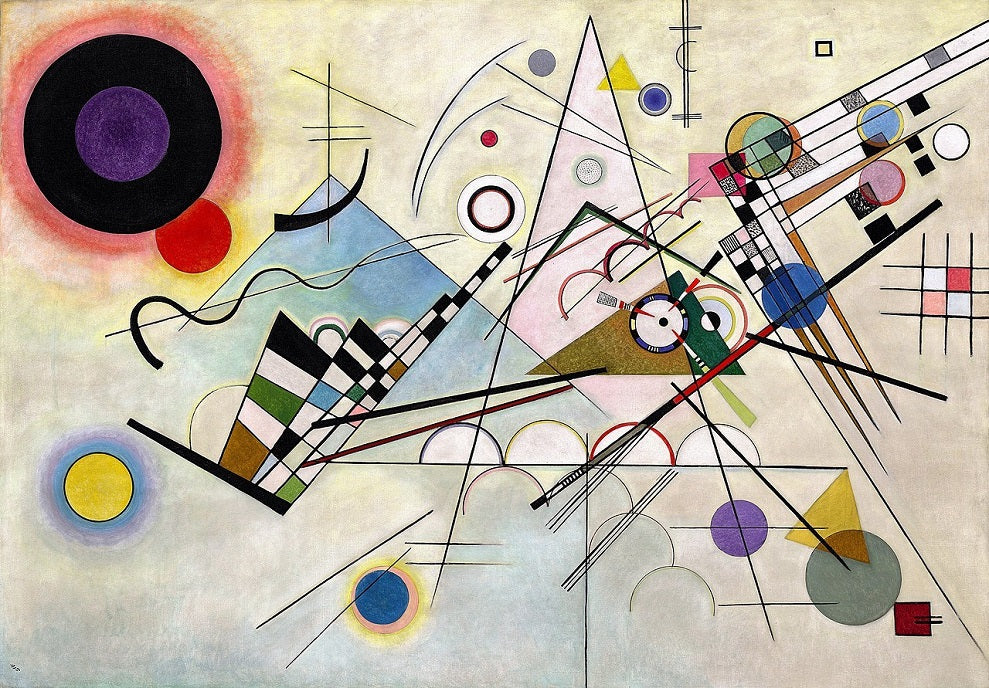
Composition VIII presents geometric elements and precisely drawn lines. The light background is made up of halos of colour that create a uniform surface. The large dark circle emerges among the other figures while other smaller circles are scattered over the surface and overlap the other shapes. Towards the centre, two triangular shapes enclose part of the surface but leave their bases open. The shape represented by the half-circle is repeated towards the centre in different positions.
In the right corner, six lines intersect to form a square grid, while other lines interact in different parts of the abstract work. Other curved lines are almost parallel at the top. Others wrap around a straight line instead. Some circles are surrounded by black lines while others are described by simple colours.
Date of the work : 1923
Original dimensions : 140 cm x 201 cm
Place of conservation : Solomon R. Guggenheim Museum



